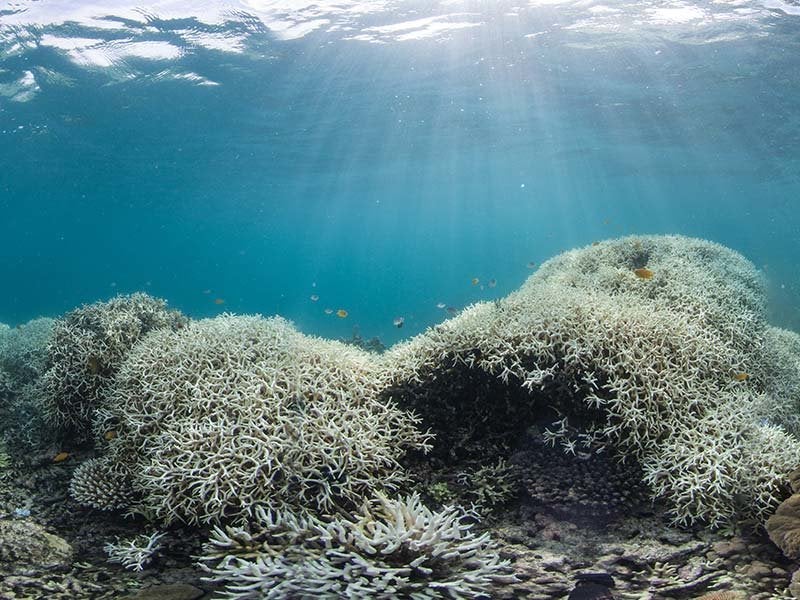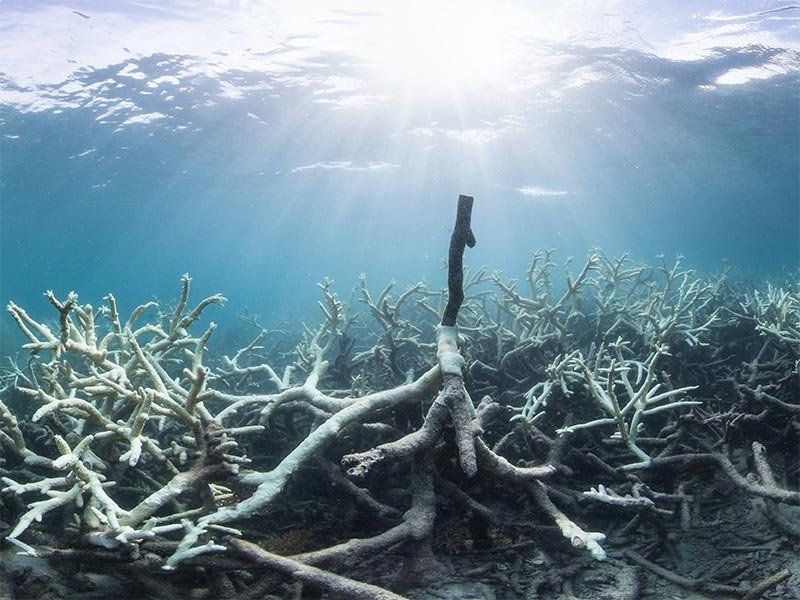It’s been a wretched year for Australia’s Great Barrier Reef, the largest living structure and one of the most complex natural ecosystems on Earth.
The area suffered the worst bleaching event ever, one that impacted over 90 percent of the reef and killed more than a third of its corals. Earlier this year, shocking photos and video revealed total devastation in parts of the reef.
Now, entire swathes of the Great Barrier Reef are suffering from “complete ecosystem collapse,” marine researcher Justin Marshall said after spending a week conducting surveys near Lizard Island in the northern region of the reef.
“The lack of fish was the most shocking thing,” Marshall told The Guardian. “In broad terms, I was seeing a lot less than 50 percent of what was there [before the bleaching]. Some species I wasn’t seeing at all.”
Previously-common fish species in the area like the black-and-white striped humbug damselfish and green chromis had almost “completely”disappeared, said Marshall.
Driven by climate change and enhanced by a powerful El Nino, the ongoing mass bleaching event hasn’t just impacted the Great Barrier Reef, but every major reef region in the world. It’s the most widespread coral bleaching event in recorded history, according to The Guardian.
In May, Terry Hughes, convenor of Australia’s National Coral Bleaching Taskforce, said this was the “third time in 18 years that the Great Barrier Reef has experienced mass bleaching due to global warming.”
The current event is “much more extreme than we’ve measured before,” he said.

An estimated 90 percent of the branching corals around Lizard Island have died. With the ecosystem so degraded, the reefs in the area will be facing an uphill battle to recovery.
Australia has already vowed to address the Great Barrier Reef’s bleaching crisis. In June, Prime Minister Malcolm Turnbull pledged $1 billion Australian dollars to clean up and preserve the reef. Environment Minister Greg Hunt said it was the “largest ever commitment to the health of the reef in Australian history.”
“It’s an investment in the legacy for our children, their children and our descendants,” Hunt said at the time.
However, political opponents and environmentalists criticized the government for hypocrisy. Last year, Hunt also approved the country’s largest coal mine, which will be located close to the Great Barrier Reef.
“This is a sneaky attempt by the Turnbull government to try to distract from the damage it is doing to the Reef by approving coal mines to export out through the Reef and cook its corals,” Larissa Waters, deputy leader of the Greens, an opposing political party, said.
Composed of over 2,900 individual reefs and home to more than 1,500 fish species, the Great Barrier Reef is both enormous and ancient. Estimated to be 20 million years old, the reef is greater in size than the United Kingdom, Holland and Switzerland combined. It’s so large it can be seen from space.
